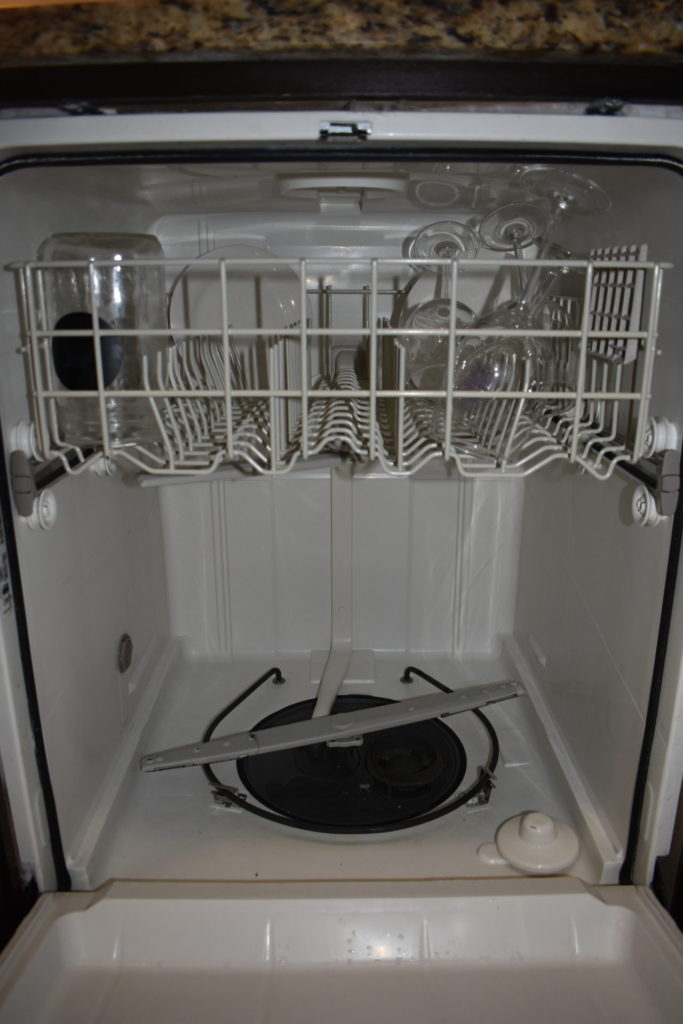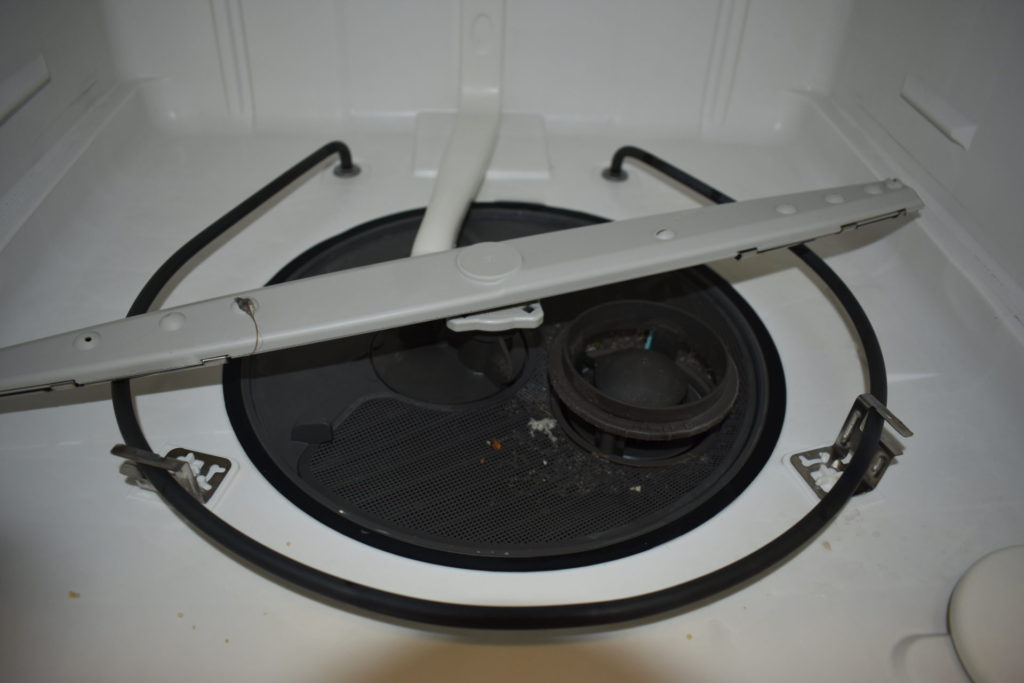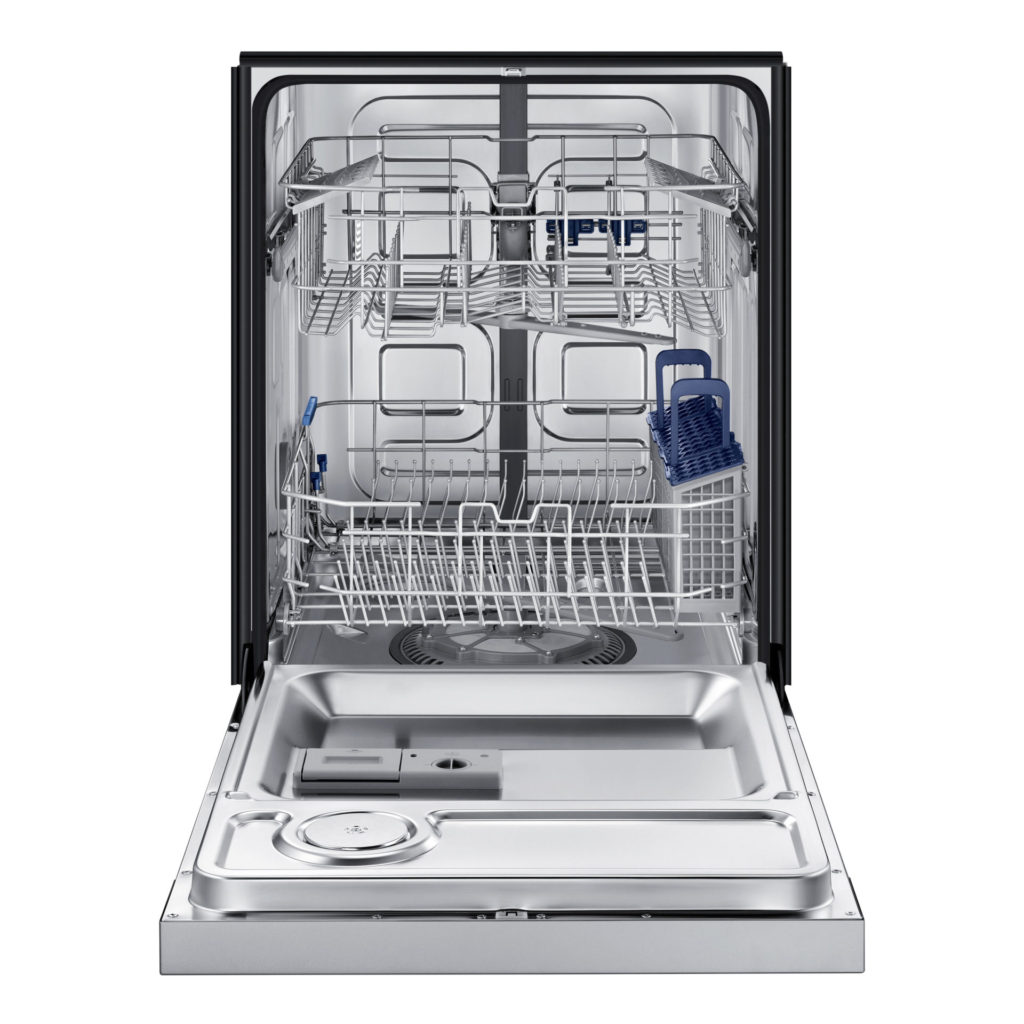Today we are going to understand what happens behind the closed door of DW for the 2 and 1/2 hours that the blue lights are lit. Before we go our separate ways today, I will leave you with a couple of links to youtube videos of the wash cycle in action and can witness your dishes dissolving the food residue and you won’t even get wet.
We are going to refer to the picture below to understand both the anatomy and physiology of the below device. I so wanted numbers on each part of the picture but could not make that happen. Here we go.

The gray circle on the left wall is known as the inlet valve where water comes in from usually your kitchen sink pipes that will fill the reservoir at the bottom. How does it not overflow? The shuffleboard looking object or UFO on the front righter which is affectionately known as the float gets to the end of its switch and the water stops flowing from the inlet valve. If your dishwasher does overflow you probably need to replace the float switch. Here is a video that shows how to check if it might need replacing before a flood hits your kitchen floors. So now there is enough water in the tub, (We will talk about how much water is needed to do a load of dishes in a future post but it is around five gallons), the water needs to be heated which is done by the elements at the bottom which you can see up close in the picture below.

Under the large gray circle in the middle resides a pump, the hot water goes that pump where it forces water into that long arm. There are two spray arms in every dishwasher, one under each rack. The bottom one is usually made of metal because it is near the heating element and the top one is often times made of plastic because it is further away from the heat. The force of the filled spray arm rotates like a sprinkler washing the food grime off the dishes. At this time the dish detergent door opens to create soapy water. It recycles the same water each time the basin fills. Depending on which cycle you use, the dishwasher can fill and empty itself 2-4 times. Don’t worry there is a whole post on that in the near future.
When the dishes are clean the heating element, heats the air to dry the dishes which the hot air is released from the vents in the front top of the outside of the dishwasher. At the back wall and behind it is where the motor hides.

If I have confused you to pieces, here are two videos that I recommend on the explanation of physiology of the dishwasher:
To see the spray arms in action and be inside the dishwasher is a sight to see as million upon millions of viewers can attest to.
- 4k Inside a Dishwasher-Gopro Hero 7 Black This video is 8 minutes long and shows some barbequed laden plates and you can see the grease leave in that time.
- Whirlpool Total Coverage Dishwasher-Full Load Interior View This video is 42 minutes long. Around the 15 minute mark you can see how tub empties and refills. It is relaxing to watch.
Now the mystery and intrigue is taken away from the automatic process, I hope that you have a better understanding of your dishwasher. Since our heads are literally and figuratively inside the machine, I thought we would stay there and learn the ins and outs and why’s of cleaning our beloved DW tomorrow.
Til tomorrow! Have fun dirtying your dishes.
Aimee